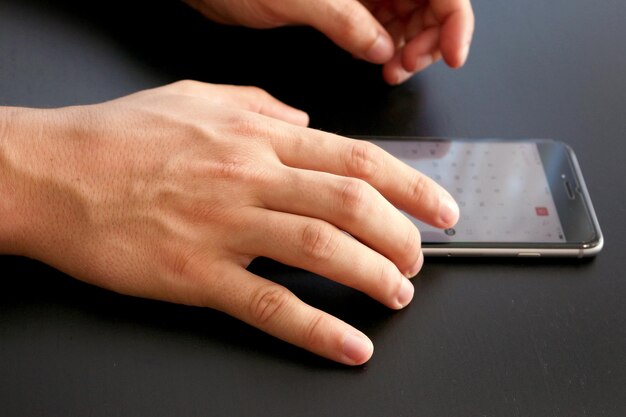Seamless eSIM Transfers: A Step-by-Step Guide for iPhone Users
Have you recently upgraded to a new iPhone and are now faced with the task of transferring your eSIM? You're not alone. As more users shift to eSIM technology, understanding how to smoothly transition from one device to another becomes crucial. This guide will walk you through the process with detailed instructions, important considerations, and valuable tips to make the switch effortlessly.
Understanding eSIM Technology 📱
What Is an eSIM?
An eSIM is an embedded SIM card that is integrated directly into your mobile device. Unlike traditional SIM cards, it doesn't require a physical card or slot, making it a popular choice for modern smartphones. It enables users to connect to different carriers without the need to swap out physical cards, offering flexibility in managing mobile plans and numbers.
Advantages of Using eSIM
Convenience: Quickly change carriers or plans without the hassle of a physical SIM swap.
Flexibility: Easily have multiple numbers or plans on one device for work and personal use.
Space-Saving: No SIM card tray, allowing for more compact or better-designed devices.
Preparing for Your eSIM Transfer
Before diving into the transfer process, some preparation will ensure a smooth transition.
Checklist Before You Begin
- Ensure Compatibility: Verify both your old and new iPhones support eSIM. Most recent models do, but it's always good to check.
- Check Carrier Support: Not all carriers support eSIM. Confirm with your provider that this feature is available.
- Backup Your Data: Always back up your information on iCloud or a computer to prevent data loss during the switch.
- Update iOS: Make sure both devices are running the latest version of iOS for smoother functionality and security patches.
Step-by-Step eSIM Transfer Process
Let's break down the transfer into straightforward steps:
On Your Old iPhone
- Access Settings: Navigate to 'Settings' on your home screen.
- Select Mobile Data: Tap on 'Mobile Data' or 'Cellular,' depending on your regional settings.
- Manage eSIM: Tap 'Manage eSIM.' You'll see your current plan details.
- Remove eSIM: Choose to remove or transfer. This might vary by carrier, but typically involves a simple confirmation.
On Your New iPhone
- Turn On the Device: Power up your new iPhone and connect to Wi-Fi for seamless transfer.
- Start Setup Process: During the setup process, you'll reach the 'Data & Apps' screen.
- Select eSIM Transfer: Choose to transfer the eSIM plan from another iPhone.
- Follow Prompts: Your old iPhone might receive a prompt to confirm the transfer. Accept to proceed.
- Wait for Activation: Activation on the new iPhone could take a few minutes. Once set, your connection should be active.
Troubleshooting Common Issues
- Carrier Issues: If your eSIM doesn’t activate, check with your carrier. Some might need you to scan a QR code or call customer service for activation.
- Verifying Network: After setup, ensure network settings are correct by comparing them with your carrier settings.
Related Topics for Deeper Understanding
Dual SIM Capabilities 📶
Modern iPhones support dual SIM functionality, combining a physical SIM and an eSIM. This feature is excellent for those who juggle work and personal numbers on one device.
Traveling with eSIMs 🌍
eSIMs are fantastic for globetrotters. Easily switch to local carriers while traveling by purchasing an eSIM plan from a local provider without needing to carry around multiple physical SIM cards.
Important Tips and Insights
- Security Consideration: eSIMs can be remotely activated and deactivated. In case of theft, inform your carrier immediately to deactivate the eSIM.
- Environmentally Friendly: Reducing the production of physical SIM cards is better for the environment, contributing to lowered plastic waste.
Summary of Key Takeaways 📋
- Compatibility Check: Ensure both devices and carriers support eSIM.
- Backup Necessity: Always back up important data before making the switch.
- Follow Steps Carefully: Adhere to the step-by-step guide for a flawless transfer.
- Stay Updated: Keep both phones' software up-to-date.
- eSIM Flexibility: Enjoy the freedom of switching carriers and plans effortlessly with minimal environmental impact.
Final Thoughts 🌟
Mastering the transfer of an eSIM from one iPhone to another empowers you to leverage modern connectivity with confidence. With the steps and tips laid out above, you'll be ready for any switch or upgrade, enjoying the freedom and flexibility that eSIM technology offers. Embrace the new era of mobile connectivity by staying informed and adventurous in exploring all the possibilities your device can provide.

Related Topics
- How Can I Transfer a Video From Iphone To Computer
- How Can I Transfer Apps From Iphone To Ipad
- How Can I Transfer Apps From One Iphone To Another
- How Can I Transfer Contacts From Iphone To Iphone
- How Can I Transfer Contacts From One Iphone To Another
- How Can I Transfer Data From Iphone To Android
- How Can I Transfer Data From Iphone To Iphone
- How Can I Transfer Data From Iphone To Samsung
- How Can I Transfer Files From Android To Pc
- How Can I Transfer From Iphone To Samsung